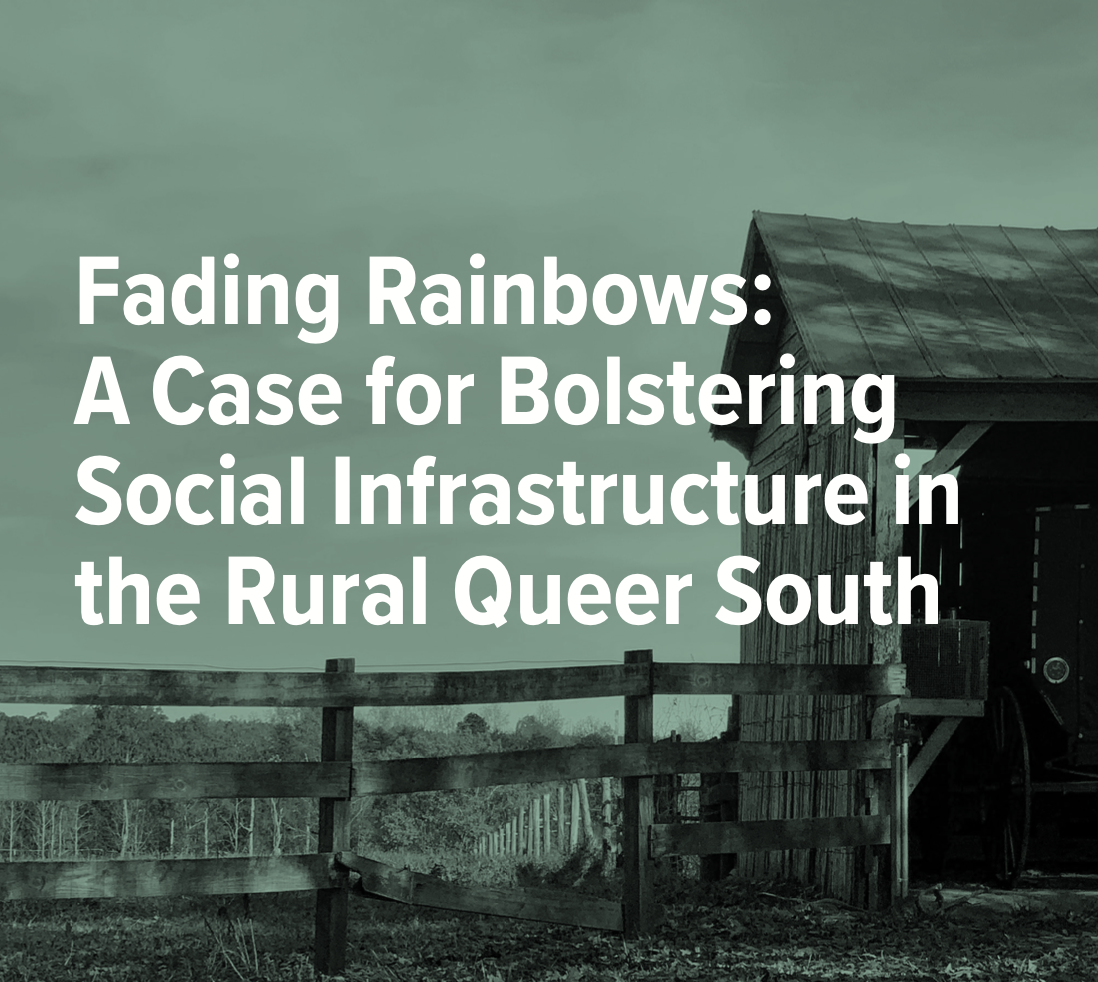Fading Rainbows: A Case for Bolstering Social Infrastructure in the Rural Queer South
By Miles Davis-Matthews
In just the first two weeks of 2023, over 100 bills targeting LGBTQ+ populations were filed across 22 states, keeping in line with the yearslong political onslaught of targeted attacks on LGBTQ+ life and culture. Beyond the bills that seek to ban transgender students from competing on sports teams that align with their gender identity and restrict access to gender-affirming medical care, attacks on queer cultural institutions such as drag performances and other queer displays of community are also increasing in prevalence. Reactions and responses to these destructive efforts are well documented in big cities that have large queer populations, but we should also listen to the responses of a large portion of the queer community that is most directly affected by some of these policies: Black queer people living in rural regions of states in the South where many of these harmful bills originate.
According to reports from the Movement Advancement Project, there are anywhere from 2.9 million to 3.8 million lesbian, gay, bisexual, and transgender people living in rural America. While estimates of exactly how many LGBTQ+ Black Americans live in rural America are vague due to lack of research, nearly 9 out of 10 of Black Americans living in rural and small towns reside in the South. Nine of the 10 states with the highest concentration of Black same-sex couples are also in the South, seven of which are “majority rural” states. Unfortunately, many of these Southern states lack any kind of protections for LGBTQ+ populations and, given the legacy of racism in the U.S., Black LGBTQ+ Americans living in the rural South experience higher rates of poverty and unemployment, more educational disparities, and greater health challenges than their Black non-LGBTQ+ counterparts.
Despite significant adversity, LGBTQ+ Black Americans continue to survive and thrive even in the most under–resourced, underserved areas in the country. The legacy of Black mutual aid efforts — one of the best known being the Black Panther Party’s Survival Programs of the late 1960s through the early 1980s — is well documented, and the impacts have been widely felt. Community care has long been a central part of Black LGBTQ+ survival and continues to be significant today as more threats to the community’s economic, physical, and emotional safety emerge. Data scarcity leaves room for a number of questions surrounding these social support systems, however, including: What does this community care look like in rural spaces? And what kinds of social infrastructure support the development of community in areas where access to things like well-resourced LGBTQ+ centers or queer clubs is severely limited?
Through a survey of 1,042 LGBTQ+ adults in the Southern states of Alabama, Arkansas, Georgia, Kentucky, Louisiana, Mississippi, Missouri, North Carolina, Oklahoma, South Carolina, Tennessee, and Virginia, Data for Progress explored the significance of LGBTQ+-affirming community spaces, Southern LGBTQ+ people’s relationships to their communities, and the specific threats faced by marginalized, rural LGBTQ+ communities in order to offer policymakers more information about how they can better support the needs of their LGBTQ+ constituents.

